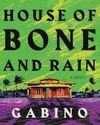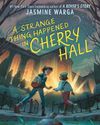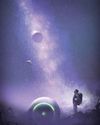
We've all heard it said before: There are two sides to every story. Sometimes writers take this s adage quite literally when they decide the novel they're dreaming up would best be told through two different perspectives. Writing from the vantage point of two narrators, or dual points of view (POVS), can add a richness and complexity to your story that a single point of view may not. Imagine if we only had Nick's side of the story in Gillian Flynn's Gone Girl. Or only Amy's. Without dual POVS in Alison Cochrun's The Charm Offensive, we might have only experienced half the humor, half the heat.
Of course, writing from two perspectives can also feel like twice the amount of work. In order to successfully pull off this kind of narrative, you'll need to have two separate character arcs, two plot-lines that intertwine or converge, and two distinct voices and personalities. So, before putting in all that effort, it's probably helpful to ask yourself one very important question: Why?
Why would this story benefit from being told in two points of view? Would a second perspective add a layer of something that couldn't be achieved with just one? More dramatic suspense? More romantic tension? A better exploration or depiction of the novel's overarching theme? When writing his queer post-apocalyptic romance, All That's Left in the World, Erik J. Brown knew dual POVS would make for a more gripping story:
"When there are two characters in a scene, who maybe don't trust each other or are hiding things from one another, it heightens that tension." He went on to add, "It's easy for one character to assume what the other is thinking, but it's a special kind of connection readers get when they know the truth."
Once you have your "why," it's time to figure out your "hows."
How do I decide who my two narrators are?
This story is from the July - August 2023 edition of Writer’s Digest.
Start your 7-day Magzter GOLD free trial to access thousands of curated premium stories, and 9,000+ magazines and newspapers.
Already a subscriber ? Sign In
This story is from the July - August 2023 edition of Writer’s Digest.
Start your 7-day Magzter GOLD free trial to access thousands of curated premium stories, and 9,000+ magazines and newspapers.
Already a subscriber? Sign In

Writing for a Warming World - Imagining the overwhelming, the ubiquitous, the world-shattering.
Climate change is one of those topics that can throw novelists—and everyone else—into a fearful and cowering silence. When the earth is losing its familiar shapes and consolations, changing drastically and in unpredictable ways beneath our feet, how can we summon our creative resources to engage in the imaginative world-building required to write a novel that takes on these threats in compelling ways? And how to avoid writing fiction that addresses irreversible climate change without letting our prose get too preachy, overly prescriptive, saturated with despair?

Kids' Author Meg Medina Inspires Readers
WD chats with the National Ambassador of Young People’s Literature.

The Horrors of Grief
Whether hot off the presses or on the shelves for years, a good book is worth talking about.

The Mystery of Growing Up
New York Times-bestselling author Jasmine Warga tackles a new genre with her signature blend of empathy for her readers, agency for her characters, and the belief that art is the great connector.

Education
Even if it's not your thing, you're probably familiar with the term dark academia.

A Do-Over Romance
Karin Patton, the first-place winner of the 24th Annual Writer's Digest Short Short Story Awards, shares a funny story about secondchance love and a brief Q&A.

Everyday Wonder
How to mine awe from the mundane

From Ordinary to Extraordinary
Unveil the hidden beauty in the facts and transform your nonfiction with the power of wonder.

Childhood: Our Touchstone for Wonder
How to get in touch with Little You and create big new work for today.

Agent Roundup
22 agents share details, about what kind of writing will pique their interest and offer tips for querying writers...